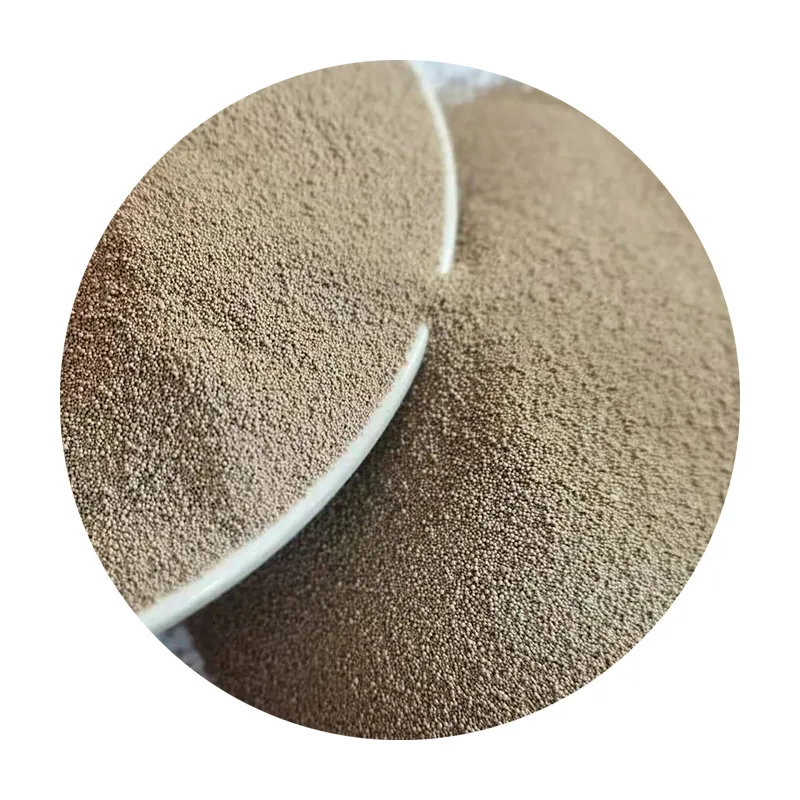The quest for smooth 3D prints without sanding has long challenged engineers and hobbyists alike. Traditional post-processing methods often involve labor-intensive sanding or chemical treatments, which risk altering dimensional accuracy. Enter ceramic sand, a game-changing material that eliminates these hurdles. When integrated into 3D printing resins or filaments, its ultra-fine particles fill microscopic layer lines during the printing process, resulting in surfaces with a near-mirror finish straight off the build plate. This innovation is particularly transformative for industries like aerospace and medical device manufacturing, where micron-level precision is non-negotiable. Unlike conventional sands, ceramic variants exhibit thermal stability, preventing warping during curing phases. By minimizing manual interventions, manufacturers reduce production timelines by up to 40%, making smooth 3D prints without sanding a cornerstone of lean manufacturing.

Mastering Wet Sand 3D Print Techniques for Flawless Finishes
For projects demanding museum-grade aesthetics, wet sand 3D print methodologies have emerged as a gold standard. Combining ceramic sand with water-based lubricants, this process reduces friction and prevents clogging of abrasive particles. When wet sanding 3D prints, users achieve uniform material removal across curved or intricate geometries—a feat difficult with dry methods. Automotive designers, for instance, rely on this technique to refine prototype dashboards or engine components without compromising structural integrity. The water also acts as a coolant, mitigating heat-induced distortions in thermoplastic parts. Industrial trials show that wet sanding 3D prints with ceramic abrasives extends tool life by 60% compared to silica-based alternatives. For DIY enthusiasts, handheld wet sanding kits paired with ceramic sandpapers (2000–5000 grit) enable studio-quality finishes on cosplay props or home décor items, bridging professional and consumer markets.
3D Print Sand Solutions: Bridging Prototyping and Mass Production
The rise of 3D print sand technologies has blurred the lines between rapid prototyping and industrial-scale manufacturing. Ceramic sand’s compatibility with binder jetting systems allows foundries to produce complex sand molds in hours rather than weeks. These molds withstand molten metals up to 1600°C, enabling 3D print sand casting of turbine blades or hydraulic valves with zero draft angles—an impossibility with traditional methods. Post-casting, the sand disintegrates effortlessly, leaving no residual debris on metal surfaces. Automotive giants report 30% cost savings using 3D print sand casting for low-volume specialty parts, bypassing expensive tooling modifications. Beyond metalcasting, architects leverage ceramic sand-infused concretes to 3D print textured façades that mimic natural stone, demonstrating the material’s versatility. With particle sizes customizable from 50 μm to 1 mm, 3D print sand adapts to applications ranging from microfluidic devices to earthquake-resistant building components.
Sustainable 3D Print Sand Casting for Circular Manufacturing
As industries pivot toward eco-conscious practices, 3D print sand casting powered by ceramic sands is redefining sustainability. Traditional foundry sands, often silica-based, generate hazardous waste after single-use cycles. In contrast, ceramic variants are 98% recyclable—post-casting, they’re reclaimed through sieving and thermal reactivation. A European aerospace supplier recently achieved zero landfill status by integrating this closed-loop system. Moreover, the energy-efficient nature of 3D print sand casting reduces carbon footprints: direct printing of molds slashes material waste by 70% compared to CNC machining. Artists and small foundries also benefit; desktop 3D sand printers using ceramic materials democratize access to high-precision casting without toxic byproducts. From jewelry makers crafting intricate bronze pendants to manufacturers of solar panel brackets, 3D print sand casting marries ecological responsibility with technical excellence.
FAQs: Ceramic Sand in 3D Printing and Casting
Can I achieve a glossy finish on PLA prints without sanding?
Yes! Using ceramic sand-enhanced PLA filaments eliminates visible layer lines. Post-printing, a quick pass with a wet sand 3D print kit (6000 grit) delivers a glass-like surface.
Is wet sanding safe for resin-based 3D prints?
Absolutely. Wet sanding 3D prints with ceramic abrasives prevents overheating, which is critical for UV resins prone to softening. Always use non-abrasive lubricants like pH-neutral soaps.
How many times can ceramic sand be reused in casting?
High-purity 3D print sand retains its binding properties for up to 15 cycles. Afterward, it’s ideal for secondary uses like garden pathways or construction aggregates.
Can I mix ceramic sand with regular beach sand for DIY casting?
Not recommended. Beach sand’s irregular granules and organic impurities compromise mold integrity. Stick to graded 3D print sand casting materials for reliable results.
What safety gear is needed for wet sanding?
Wear nitrile gloves to avoid skin irritation and N95 masks if dry-processing reclaimed 3D print sand. Water-resistant aprons protect against splashes during wet sand 3D print workflows.
Elevate Your Production with Next-Gen Ceramic Sands
Unlock unparalleled precision and sustainability in your 3D printing and casting projects. Our premium ceramic sand solutions—engineered for smooth 3D prints without sanding and robust 3D print sand casting—are trusted by global industry leaders. Visit our website today to request samples or place bulk orders. Transform your workflow; embrace the future of manufacturing.
Next:Resin Coated Sand Price - High-Quality & Cost-Effective Solutions
